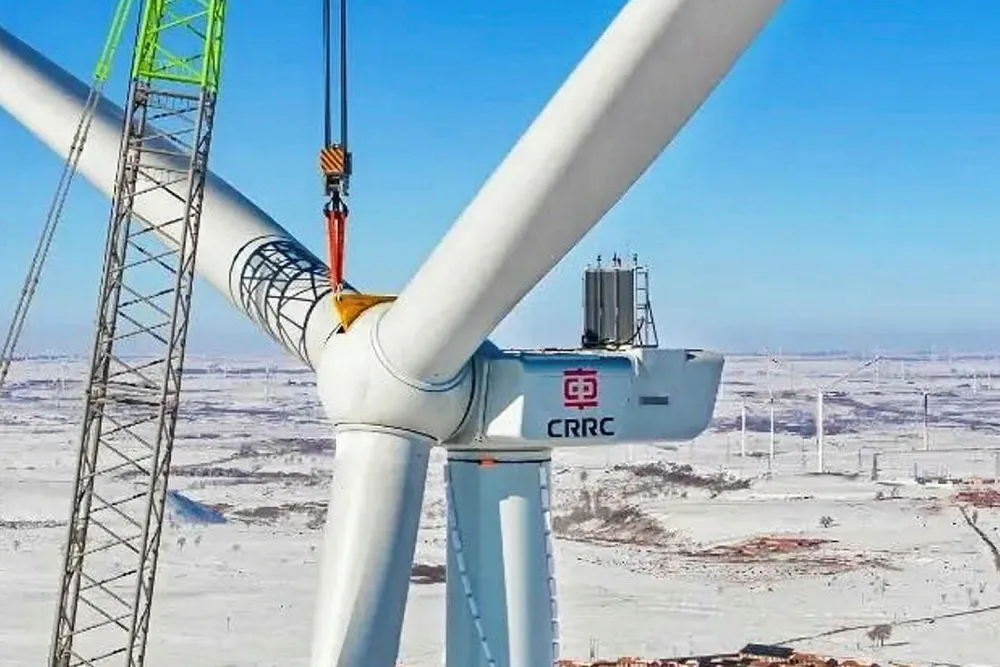Chinese rail giant CRRC signals 20MW floating wind turbine
Turbine announced in Hamburg would be among most powerful on Earth, with Chinese manufacturers at forefront of supersized machines

Chinese state-owned manufacturing giant CRRC has flagged plans to launch a 20MW model aimed at the floating wind market that would be among the most powerful in the industry so far.
CRRC Yongji announced the new model, which has a 260-metre rotor diameter and a maximum blade tip height of 320 metres, at the WindEnergy Hamburg conference taking place this week in Germany.
Its 53,000 metres squared swept area is equivalent to seven standard football fields, said CRRC.
It generates 40kWh of electricity per rotation at full load wind speed, says CRRC, “making it an optimal solution for deep-water offshore wind resource development.”
However, although the machine was announced in Hamburg, the Chinese player has not so far given further details over production or commercial availability to indicate when it might appear in the water.
The new machine, if delivered to a project, would be among the largest floating wind turbines – or indeed turbine of any description – on Earth.
Fellow Chinese OEM Mingyang has developed an 18.8MW model for which it has struck a deal to supply for a huge Italian wind farm. Indeed, 20MW is the rating of the current most powerful installed wind turbine on the planet, a fixed-bottom machine that Mingyang installed a test version of last month.
CRRC Group is best known as a railway supplier but its power systems subsidiary CRRC Yongji is a major player in China’s wind sector.
With 20 manufacturing facilities, CRRC says it has equipped more than 260 wind farms worldwide, boasting a total installed capacity of over 13,000 units.
CRRC has exported turbine components to countries around the world but has only exported entire turbines so far to Vietnam.
China’s OEMs are currently leading what has been described as a wind turbine ‘arms race’ globally. Manufacturers have been rolling out ever larger models in quick succession, particularly in the offshore wind sector.
This had led to warnings, particularly in the European wind sector, that rapid scaling up of turbines may be leading to reliability issues, as well as putting strain on the supply chain.
(Copyright)